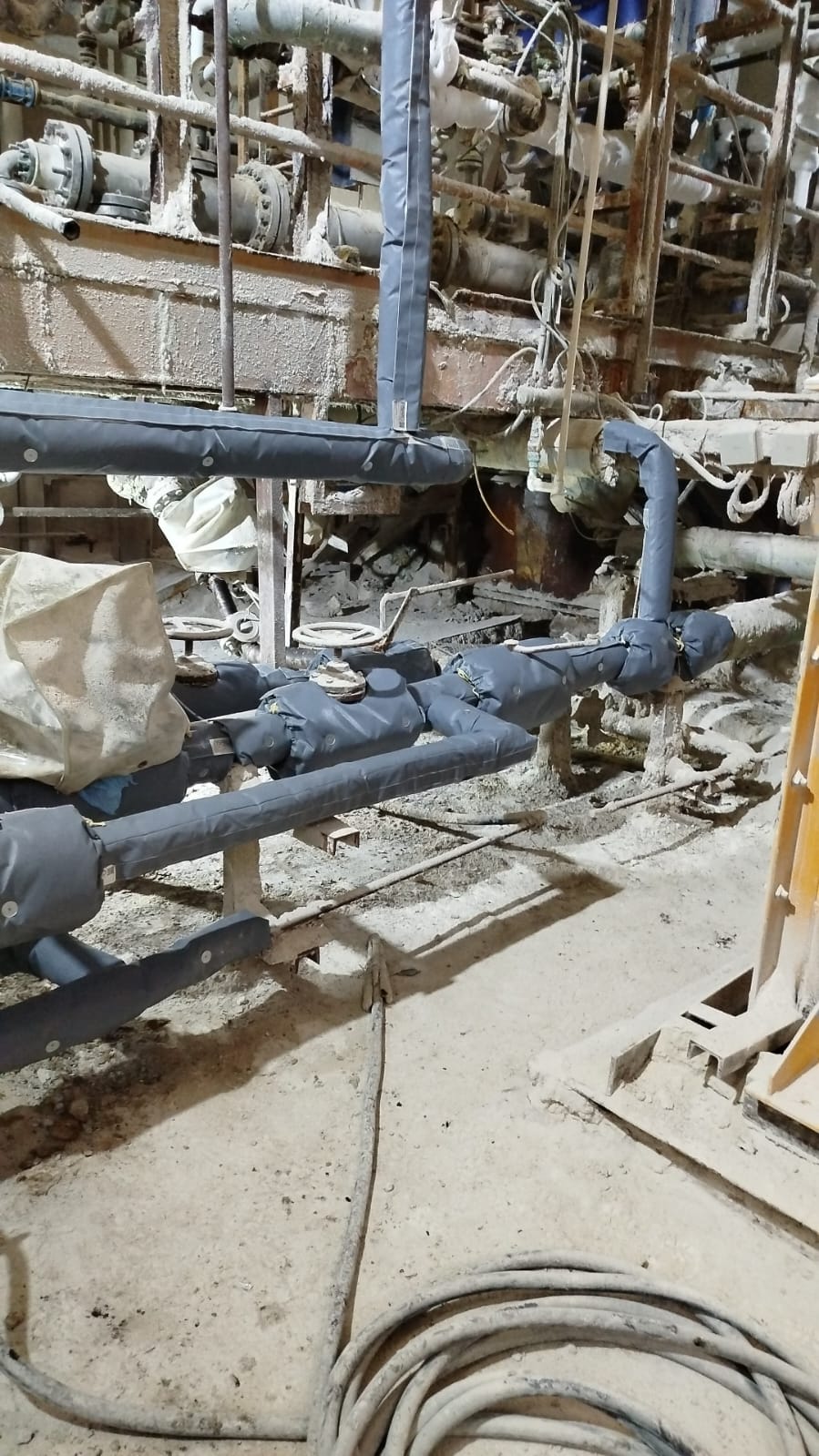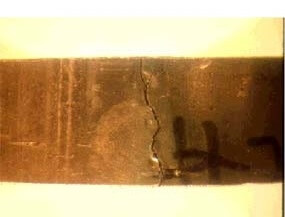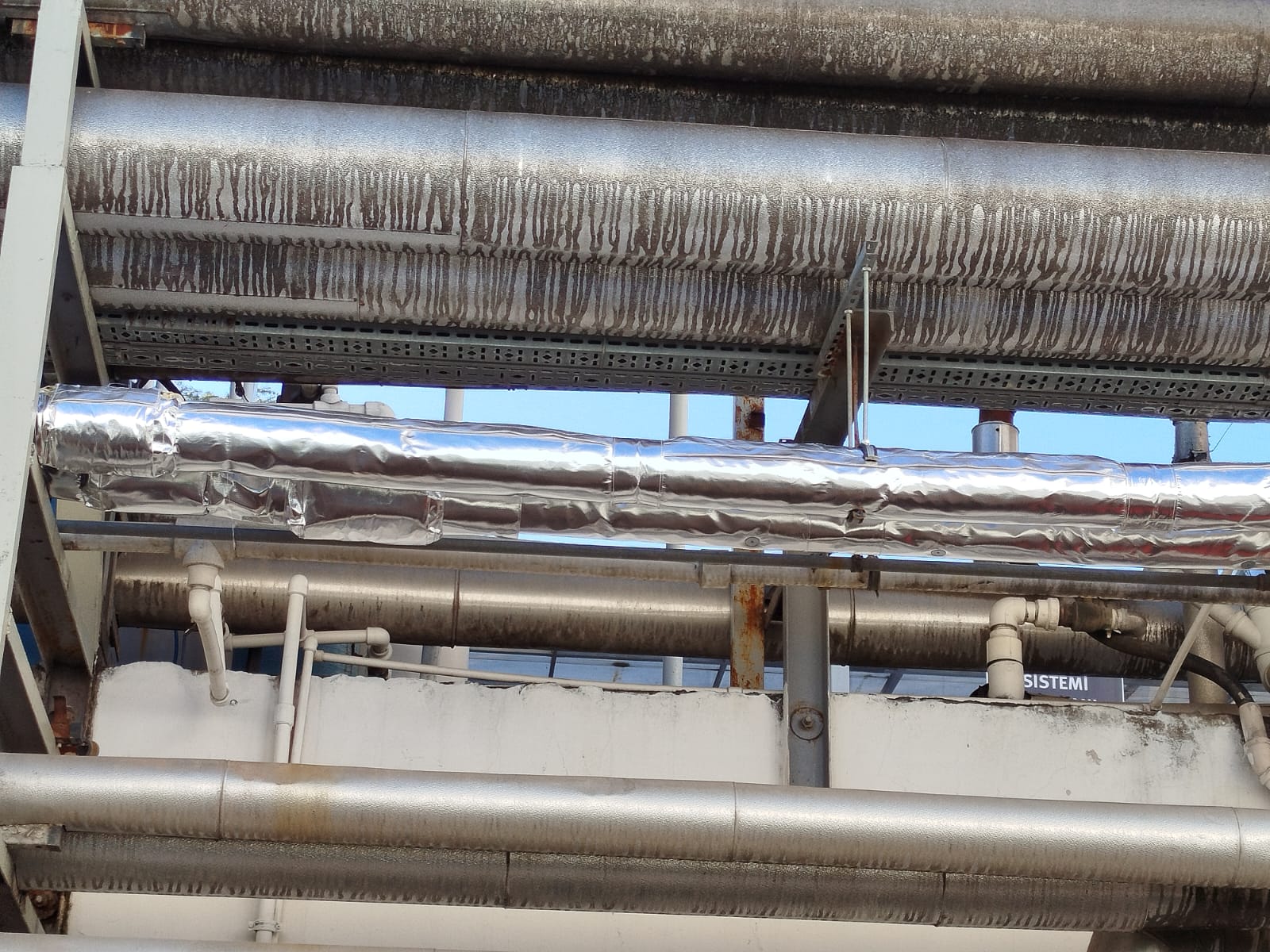A NEW APPROACG TO PIPELINE INSULATION IN INDUSTRIAL FACILITIES: INSULATION JACKETS
Energy efficiency and safety are among the top priorities for businesses in industrial facilities. In this context, the insulation of pipelines is of great importance. Although traditional sheet metal cladding methods are widely used, insulation jackets have become more preferred in recent years. So, why have insulation jackets become so popular? Here is the answer to this question:
1. Durability and Reliability
Although traditional sheet metal cladding methods are effective in reducing heat loss in pipelines, they unfortunately have a high risk of deformation in relatively short periods. Any dent or damage on the metal cladding exposes the insulation material to external factors, especially water ingress. In this case, both the insulation capability dramatically decreases, and the risk of corrosion on the insulated line arises. (See https://insulant.pro/corrosion-under-insulation-blog/)

Figure 1 Insulation Jackets on Pipeline of a Fertilizer Manufacturing Facility

Figure 2 Stress corrosion cracking of an insulated stainless steel condensate line.
Source: NASA Corrosion Engineering Laboratory
Additionally, the components used within sheet metal cladding methods (spacers, cladding sheets, etc.) can corrode over time, creating other safety risks.
However, in lines insulated with insulation jackets, the insulation material is housed within the jacket material, minimizing exposure to external factors. Furthermore, the risk of corrosion in jacket cladding materials is not an issue. The insulation capabilities of lines insulated with insulation jackets last longer compared to those insulated with sheet metal cladding, and the risk of corrosion on the pipeline itself is also minimized.
2. Easy Installation and Occupational Safety
Sheet metal cladding requires time and labor for installation and maintenance processes. Insulation jackets, on the other hand, can be easily installed and removed thanks to their modular structures. This significantly reduces the total working time required for insulation tasks in any facility. Since these insulation activities are usually carried out by external labor not working in the facility, occupational safety risks will inevitably arise.
For example, insulating a 250-meter pipeline (with a reasonable amount of valves, flanges, elbows, etc.) with sheet metal cladding requires approximately 80 man-days of work in the facility. However, the same application can be completed with insulation jackets in a maximum of 6 man-days. Reducing the working hours of insulation teams unfamiliar with the facility’s specific occupational safety rules means minimizing the risk of potential accidents at least by the same proportion.
3. Maintenance and Repair Ease
Maintenance, repair, and inspection (such as weld inspection) activities on a pipeline insulated with insulation jackets are extremely easy due to the modular and removable nature of the jackets. Maintenance activities on the pipe body, line components (valves, flanges, elbows, tees, etc.), and insulation system components can be completed easily and quickly. This feature accelerates maintenance and repair processes, ensuring operational continuity and process reliability.

Figure 3 Insulation Jackets and Metal Cladding
4. Flexible and Adaptable Design
The designs of insulation jackets are made by expert industrial designers to fit different pipe diameters and shapes. The most suitable design for different and asymmetric geometric shapes is considered in terms of both operational capability (temperature, pressure, mechanical exposure insulation performance, etc.) and installation capability. In insulation applications made with sheet metal cladding, it is generally expected that field workers find solutions, and the insulation application is not separately evaluated for different conditions. This feature allows insulation jackets to adapt to challenging working conditions in the most efficient way and naturally last longer.
5. Cost-Effectiveness
For the same amount of insulation application, sometimes sheet metal cladding and sometimes insulation jackets have an initial cost advantage. In some cases, the initial costs may be higher compared to sheet metal cladding, but the long-term cost advantages of insulation jackets outlined above cannot be ignored. Lower energy consumption, reduced maintenance costs, and longer lifespans mean that insulation jackets significantly reduce the total cost of ownership.
6. Energy Efficiency and Reduction of Heat Loss
The advantage mentioned in this section is also valid for sheet metal cladding insulation applications at the beginning. However, although traditional sheet metal cladding methods are effective in reducing heat loss in pipes, insulation jackets perform better in this regard. Insulation jackets minimize heat loss and increase energy efficiency thanks to their high insulation properties. This helps facilities reduce their energy costs.
Conclusion
The use of insulation jackets in pipe insulation in industrial facilities offers significant advantages in terms of energy efficiency, cost-effectiveness, occupational safety, and process reliability. Compared to traditional sheet metal cladding methods, insulation jackets are a more modern and effective solution, contributing to the sustainability goals of industrial facilities.
